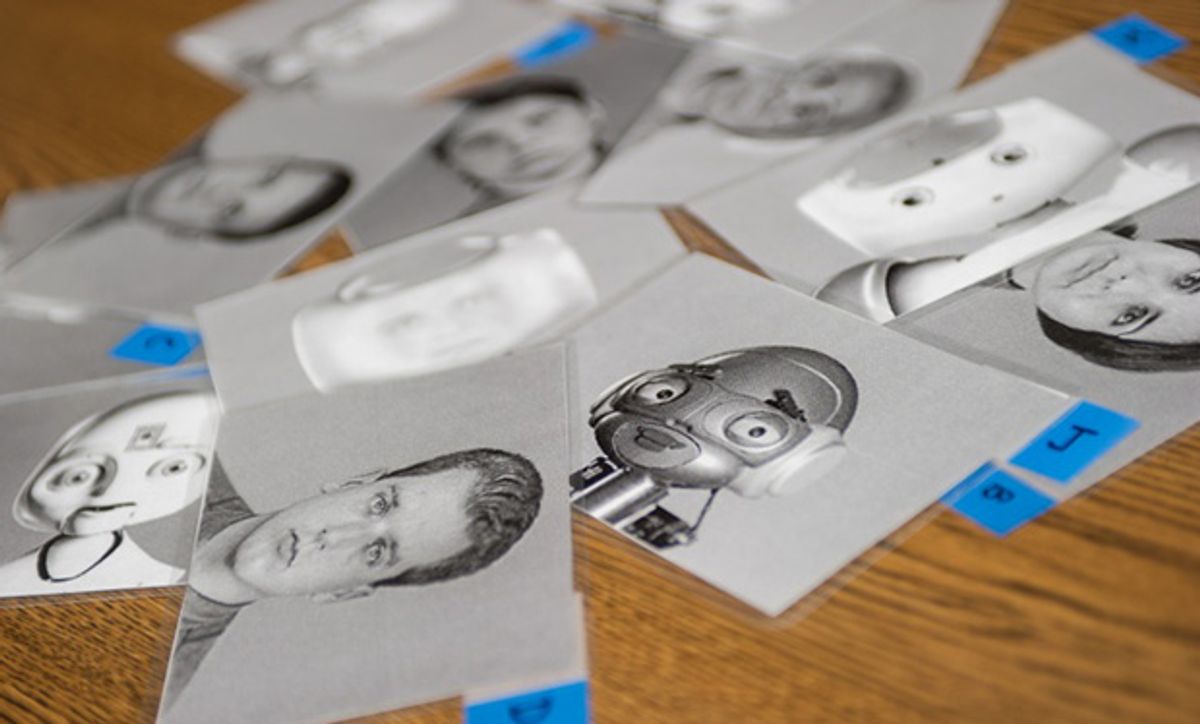At some point, we'll all have assistive robots in our homes. Even the most optimistic projections (and we're not responsible for any of those) put it a ways out, and the first place these robots will show up will likely be in an elder care capacity as opposed to doing our laundry. There has been a lot of (appropriate) emphasis on function, but form is very important as well, and the big question (or one of them, at least) is how human we should try to make these robots, and how much it matters.
Akanksha Prakash, a graduate student at Georgia Tech's School of Psychology, conducted a study to try and figure out how human robots should be. For a given task, participants of different ages where shown a series of three images consisting of a human face, a robotic face, or a mixture of the two, and asked which they'd be most comfortable interacting with.
“We found that participants, both younger and older, will assign emotional traits to a robot based on its face, which will determine what they are most comfortable interacting with,” said Prakash. “As a result, preferences for robotic appearance varied across tasks.”
Interestingly, there was a difference between the features people desired in robots performing decision-making tasks versus social tasks: for example, for robotic investment advice, younger participants liked a mixed human-robot appearance, while older adults tended to prefer a more human face. And for the social tasks, both age groups preferred a more human face.
Personal care tasks such as bathing provoked the most divisive preferences within both age groups. Those who chose a human face did so because they associated the robot with human-like care capabilities — such as nursing — and trustworthy traits. Many others didn’t want anything looking like a human to bathe them due to the private nature of the task. “Sometimes personal care can get pretty involved. Many participants said they would rather have an impersonal looking creature caring for their personal needs,” Prakash said.
We're going to need a lot more research like this before we get effective humanoid robotics in the home, if for no other reason than any robot that humans aren't comfortable using isn't going to be a commercial success. However, I'm personally not entirely convinced that these people really do want a robot with a face like a human. Study participants were shown images, not videos, and the Uncanny Valley gets a lot deeper when you throw motion into the mix.
It's also going to be very important to establish whether it's a human-like face that people respond to, as opposed to just human features. WALL-E (to take just one example) had human features (eyes and eyebrows) that provided a huge range of expression while staying safely out of the Uncanny Valley. Would humans really prefer something borderline creepy for social tasks, even if at first glance they think that they might be more comfortable with it? Again, more research is going to be needed, but my guess is that when robots enter our homes, they're not going to look much like us at all.
[ Human Factors and Aging Lab ] via [ Georgia Tech ]
Evan Ackerman is a senior editor at IEEE Spectrum. Since 2007, he has written over 6,000 articles on robotics and technology. He has a degree in Martian geology and is excellent at playing bagpipes.



